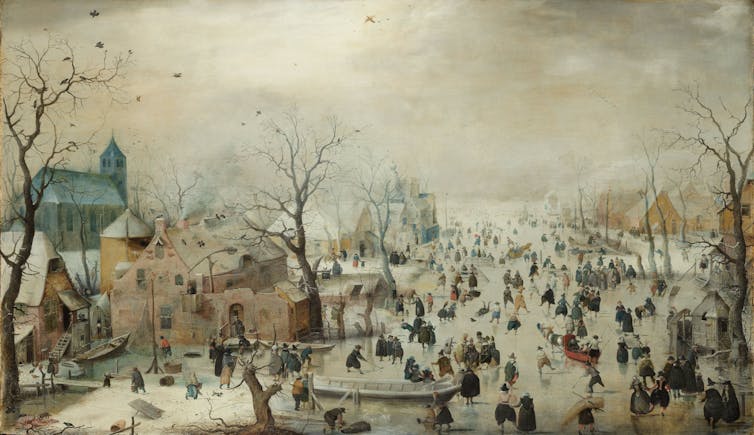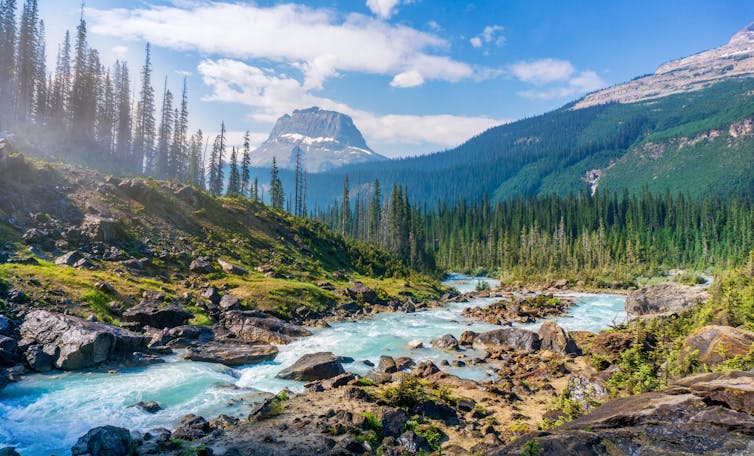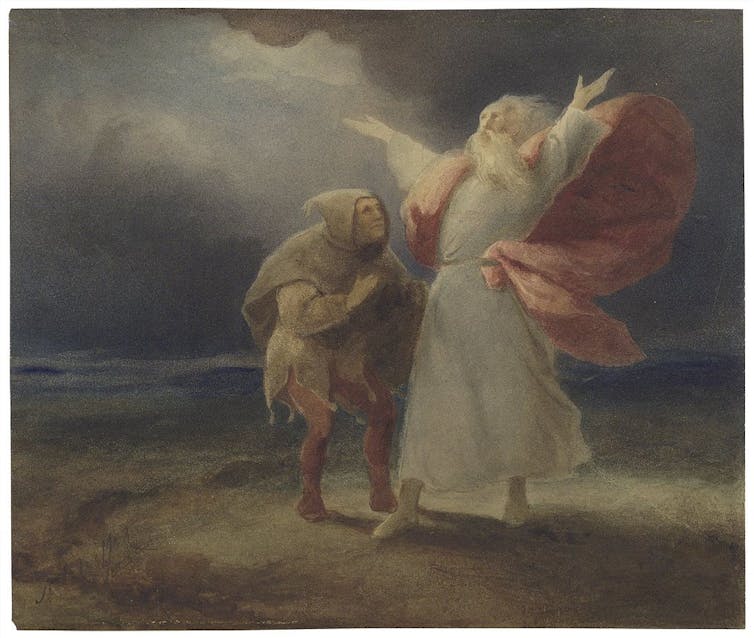Three things historical literature can teach us about the climate crisis

New novels about climate change – climate fiction, or cli-fi – are being published all the time. The nature of the climate crisis is a difficult thing to get across, and so imagining the future – a drowned New York City, say; or a world in which water is a precious commodity – can help us understand what’s at stake.
This is unsurprising in these times of crisis: fiction allows us to imagine possible futures, good and bad. When faced with such an urgent problem, it might seem like a waste of time to read earlier texts. But don’t be so sure. The climate emergency may be unprecedented, but there are a few key ways in which past literature offers a valuable perspective on the present crisis.
1. Climate histories
Historical texts reflect the changing climatic conditions that produced them. When Byron and the Shelleys stayed on the shores of Lake Geneva in 1816, the literature that they wrote responded to the wild weather of the “year without a summer”.
This was caused largely by the massive eruption of the Indonesian volcano Mount Tambora the previous year, which lowered global temperatures and led to harvest failures and famine. Literary works such as as Byron’s “Darkness”, Percy Shelley’s “Mont Blanc”, and Mary Shelley’s Frankenstein reveal anxieties about human vulnerability to environmental change even as they address our power to manipulate our environments.
Many older texts also bear indirect traces of historical climate change. In Paradise Lost (1667), Milton complains that a “cold climate” may “damp my intended wing” and prevent him from completing his masterpiece. This may well reflect the fact that he lived through the coldest period of the “Little Ice Age”.

Even literature’s oldest epic poem, The Epic of Gilgamesh (c. 1800 BC), contains traces of climate change. It tells of a huge flood which, like the later story of Noah in the Old Testament, is probably a cultural memory of sea level rise following the melting of glaciers at the end of the last Ice Age.
These historical climatic shifts were not man made, but they still provide important analogues for our own age. Indeed, many cultures have seen human activity and climate as intertwined, often through a religious framework. One of the ironies of modernity is that the development of the global climate as an object of study, apparently separate from human life, coincides with the development of the carbon capitalism that has linked them more closely than ever.
2. How we view nature
Reading historical literature also allows us to trace the development of modern constructions of the natural world. For example, the Romantic ideal of “sublime” nature, which celebrated vast, dramatic landscapes like mountains and chasms, has influenced the kinds of places that we value and protect today in the form of national parks.
When we understand that such landscapes are not purely natural, but are produced by cultural discourses and practices over time – we protect these landscapes above others for a reason – we can start to debate whether they can be better managed for the benefit of humans and non-humans alike.

Or consider how in the 18th and early 19th centuries, the work of nature writers such as Thomas Bewick, Charlotte Smith and Gilbert White played a powerful role in promoting natural theology: the theory that evidence for God’s existence can be found in the complex structures of the natural world. Past literature has also been crucial in disseminating new scientific ideas such as evolutionary theory, which understood natural phenomena as entirely secular. Literature does not just reflect changing views of the natural world; it shapes them.
Studying historical texts helps us to understand how modern cultural attitudes towards the environment developed, which in turn allows us to perceive that these attitudes are not as “natural” or inevitable as they may seem. This insight allows for the possibility that today, in a time in which our attitude towards the environment could certainly improve, they can change for the better.
3. Ways of thinking
Some of the attitudes towards the natural world that we discover in historical literature are contentious, even horrifying: for example, the normalisation of animal cruelty portrayed in books such as Black Beauty.
But we can find more promising models too. Voltaire’s poem on the 1755 Lisbon earthquake, for example, has been used to think about the ethics of blame and optimism in responses to modern disasters, like the 1995 Kobe earthquake and the 2009 L’Aquila earthquake.
Reading past literature can also help us to appreciate the natural world for its own sake. Samuel Johnson commented of the natural descriptions in James Thomson’s poems The Seasons (1730) that the reader “wonders that he never saw before what Thomson shows him and that he never yet has felt what Thomson impresses”. Amid the frenzied distractions of modern life, the work of authors like Thomson, Dorothy Wordsworth and John Clare can help us to slow down, notice and love nature.
Historical literature can remind us of our own vulnerability to elemental forces. The famous depiction of a storm in King Lear, for example, mocks Lear’s attempt:
In his little world of man to out-scorn
The two-and-fro-conflicting wind and rain.
Shakespeare might appear to aestheticise dangerous weather, but the play reminds us that the storm is far bigger and messier than any human attempt to represent and interpret it.

At the same time, literature can remind us of the need to take responsibility for our own impacts upon the environment. We may not want to follow pre-modern and early modern literature in viewing climate change as divine punishment for bad behaviour. But when Milton suggests that it was the fall of man that brought in “pinching cold and scorching heat” to replace the eternal spring of Eden, his narrative has clear figurative resonance with our present crisis.
Historical literature can show us how writers responded to climate change, trace how they influenced modern ideas about nature, and reveal valuable ways of relating to and thinking about nature. The climate crisis cannot be addressed only through technological solutions. It also requires profound cultural shifts. To make those shifts requires an understanding of past ideas and representations: both those that led to our current predicament and those that might help us address it.![]()
Further information
Main image: Albert Bierstadt, Rocky Mountain Landscape, 1870.
This article is republished from The Conversation under a Creative Commons license. Read the original article.
